‘Where are you going, Europe?’ EU chief Juncker unveils five post-Brexit scenarios
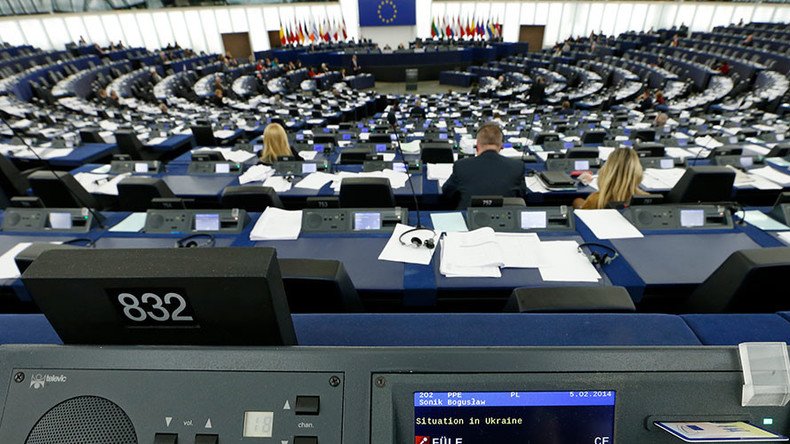
The chief of the European Commission has presented a white paper outlining possible scenarios for the EU’s post-Brexit future. One option includes reducing the bloc to “nothing but a single market” rather than building up a political union.
Jean-Claude Juncker, the president of the European Commission, is an ardent advocate of strengthening the EU. Yet, he has acknowledged that the union, even with the UK still a formal member, is facing an identity crisis, which is compounded by problems with the eurozone and migration, as well other challenges.
“It is time we sought answers to a question as old as our union is young: ‘quo vadis Europa?’ [‘where are you going, Europe?’],” he said in presenting his ‘White Paper on the Future of Europe’, which was released ahead of the March summit in Rome.
READ MORE: Germany, France & Italy call for UK to pay multibillion-euro Brexit ‘divorce bill’
The paper admits that that “Europe’s place in the world is shrinking,” while lamenting the shocking results of the British 2016 referendum on EU membership. “However painful or regrettable Brexit may be, it will not stop the EU as it moves to the future; we need to move forward,” Juncker said.
Five options for the EU’s future are outlined in the paper, ranging from a scenario with a stripped down Brussels that reduces the bloc to a single market, to one wherein ‘coalitions of the willing’ within the block will have more autonomy with respect to defense, security, and taxation.
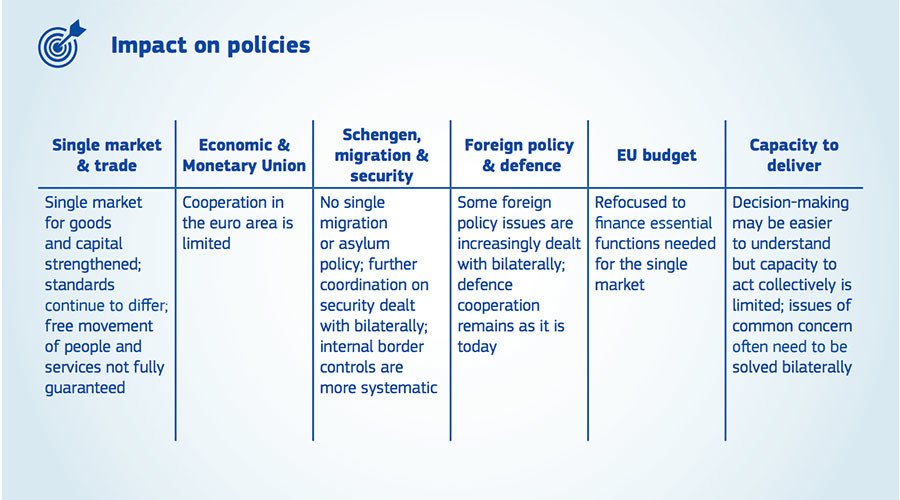
Under the first scenario, called “Carrying On,” the Union would continue business-as-usual, implementing and upgrading its current reform agenda, as outlined under the “Commission’s New Start for Europe from 2014 and of the Bratislava Declaration,” which was agreed upon by all 27 Member States in 2016.
In this scenario, the EU would focus on jobs, economic growth, and investment by strengthening the single market. It also envisions making substantial investments to develop digital, transport, and energy infrastructure.
This scenario also foresees closer cooperation on defense among member states, as well as progress towards developing a common asylum system and the negotiation of “progressive” trade agreements.
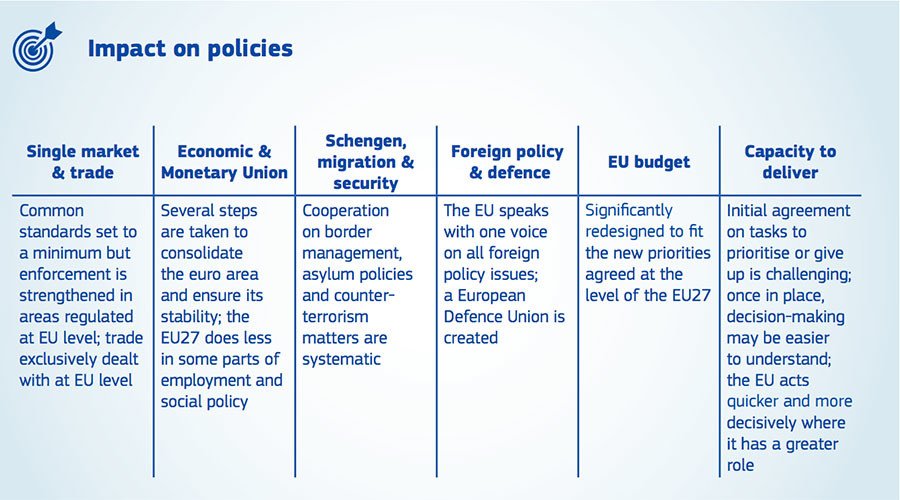
The second scenario, dubbed “Nothing but the single market,” on the other hand, sees the EU giving up on addressing issues like migration, security or defense as a bloc. Consequently, Brussels’ regulatory authority would be cut and cooperation on key policy issues would be bilateral rather than EU-based.
“The functioning of the single market becomes the main ‘raison d’être’ of the EU27. Further progress depends on the capacity to agree related policies and standards,” the White Paper states.
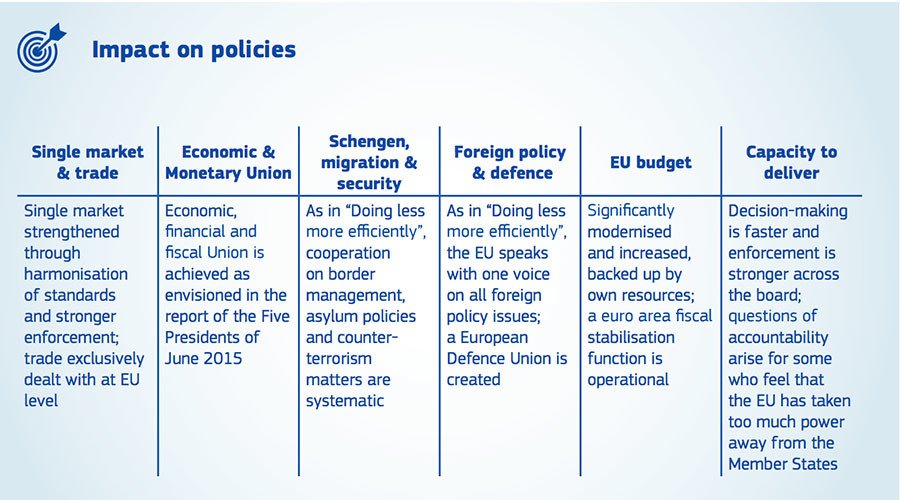
The third scenario, “Those who want more do more,” would see some members contributing more to the EU’s development than others.
“In a scenario where the EU27 proceeds as today but where certain Member States want to do more in common, one or several “coalitions of the willing” emerge to work together in specific policy areas. These may cover policies such as defense, internal security, taxation or social matters,” the White paper explains.

“Doing less more efficiently” is the fourth scenario offered to EU members. This vision sees EU27 invest in innovation, trade, security, migration, border management, defense, and counterterrorism. One of its most important aspects would be the creation of a European Defense Union.
Finally, the fifth scenario, “Doing much more together,” sees the single market strengthened through a harmonization of standards, while trade is “exclusively” dealt with at the EU level.
Acknowledging that the EU’s current policies are not working, the 27 member states would “decide to share more power, resources and decision-making across the board.” In this scenario, decision-making in Brussels would be faster, with policies efficiently agreed upon and “rapidly enforced” at the EU level.
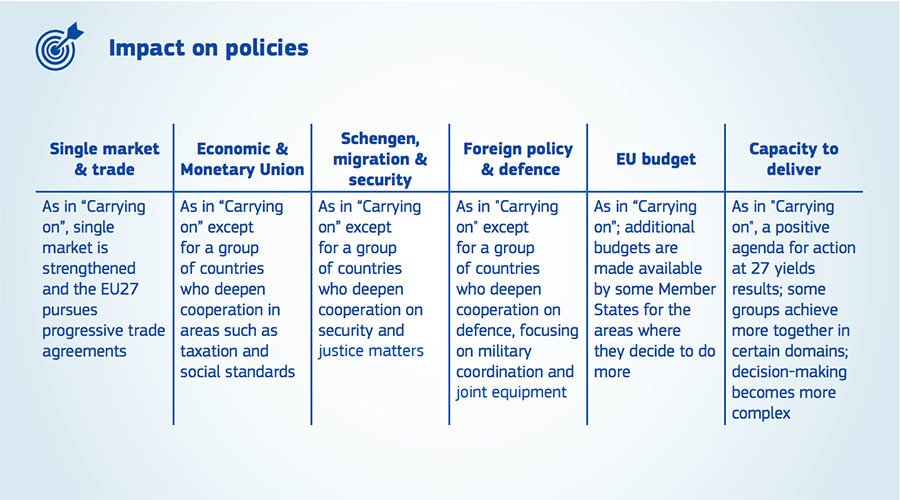
This scenario envisions that, by 2025, the “Europe speaks and acts as one in trade and is represented by one seat in most international fora.” A European defense union would be established in cooperation with NATO, with the EU becoming the global leader in trade. The eurozone itself would see much broader cooperation on “fiscal, social and taxation matters.”
“Our darkest day in 2017 will still be far brighter than any spent by our forefathers on the battlefield. As we mark the 60th anniversary of the Treaties of Rome, it is time for a united Europe of 27 to shape a vision for its future. It’s time for leadership, unity and common resolve,” Juncker concluded.












